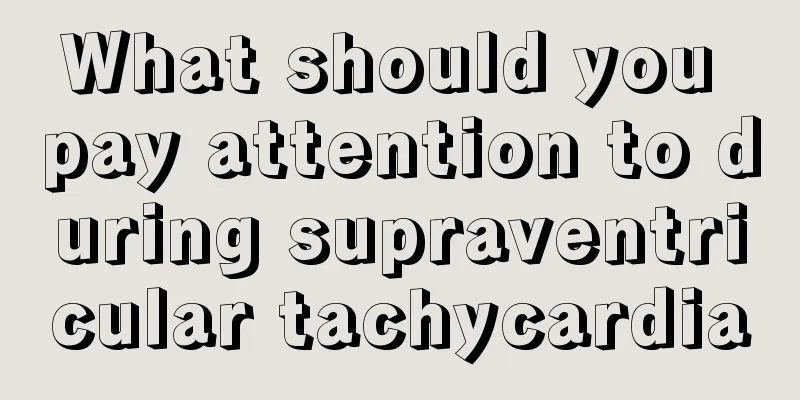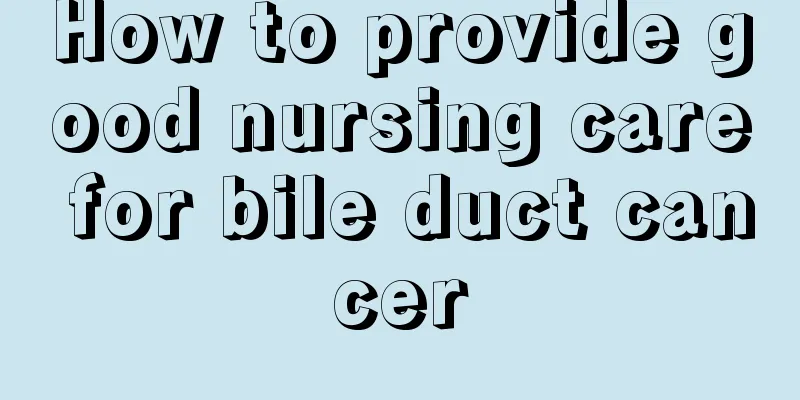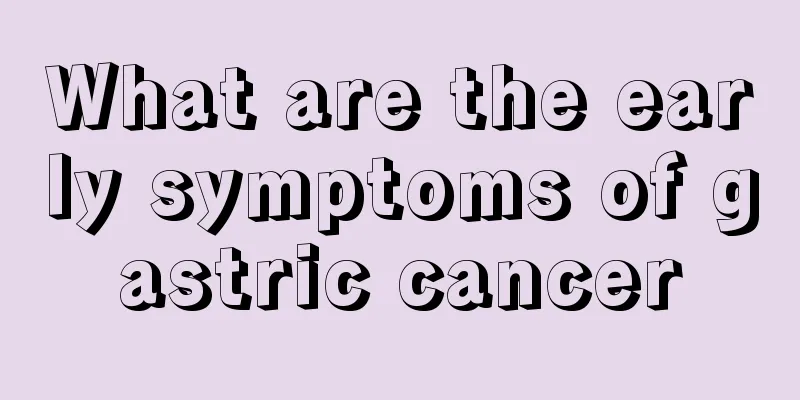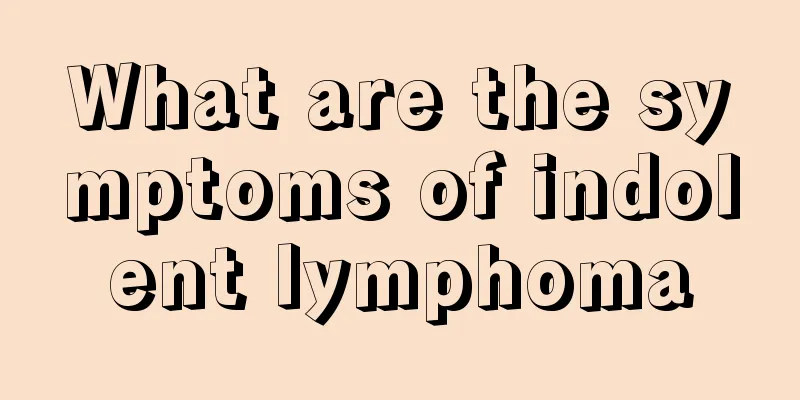What should you pay attention to during supraventricular tachycardia

|
What should we pay attention to when experiencing supraventricular tachycardia? This is a question many people want to ask. Ventricular tachycardia is a manifestation of heart disease and is the abbreviation of supraventricular tachycardia. Patients experience palpitations and discomfort in the precordial area, and an electrocardiogram shows a heart rate of more than 100 beats per minute. This disease is relatively common in clinical practice and can easily cause sudden death. The prevention of this disease is also very important. Patients should pay attention to rest and avoid overwork. Patients with supraventricular tachycardia should be careful not to be too tired, too excited, or not get enough rest. If you suddenly have palpitations, panic, and your heart rate is around 150 beats per minute, and it is too late to go to the hospital, you can treat it yourself first. Method: ---Find a way to make yourself vomit. Vomiting can slow down your heart rate or return to normal. Paroxysmal supraventricular tachycardia is a common arrhythmia, which is a series of clinical manifestations caused by a sudden and sharp increase in heartbeat. Symptoms: When the patient is in a calm state and without any warning signs, the heartbeat suddenly accelerates, with the pulse usually at 160-240 beats/minute, and up to 300 beats/minute for children. The heartbeat also returns to normal suddenly. The duration of the attack varies, from a few seconds to a few days. In most patients, the attack can terminate on its own, but in a few patients, medication is required to terminate the attack. Other symptoms vary in severity. In mild cases, there may only be palpitations, shortness of breath, dizziness, and fatigue. In severe cases, there may be chest pain, difficulty breathing, fainting, convulsions, or shock. The severity of the symptoms depends on the speed of the heart rate during the attack, whether there are other heart diseases and the patient's tolerance. Diagnostic method: The diagnosis can be made by electrocardiogram when the disease occurs. The electrocardiogram may be normal when the disease is not severe. Go to the hospital for an induction test and do an electrocardiogram after induction to confirm the diagnosis. For some patients, the electrocardiogram shows preexcitation syndrome or short PR sign when they are not ill, which is helpful for diagnosis. If the electrocardiogram shows preexcitation syndrome or short PR sign but the patient does not develop any disease, no treatment is required. Note: You cannot engage in special occupations such as driving, diving, etc. before the disease is cured, so as to avoid accidents when the disease suddenly occurs. |
<<: The hazards of home cold light whitening devices
>>: Is supraventricular tachycardia life-threatening?
Recommend
Is it a good thing to get angry from moxibustion?
Moxibustion for internal heat is a good thing, be...
What are the effects of Sophora flavescens wash solution?
Women's reproductive health is a very importa...
When do Fujian mangoes ripen
Mango is a tropical fruit and there are mango pro...
Why is my back numb and tight?
If your back is always numb and tight, you should...
Tips to prevent getting angry
In summer, due to the hot weather, many people ar...
Men should be alert to the following 3 situations when urinating, which may be signs of prostate cancer
When it comes to cancer, many people are afraid a...
What to do if gums blister
Nowadays, people don’t pay much attention to taki...
Can albumin be transfused in advanced liver cancer? Yes
Can albumin be transfused in the late stage of li...
Neck cervical protrusion, teach you a few quick tricks
With the development of society and the increasin...
What are the side effects of radiotherapy for lung cancer? 7 major side effects of radiotherapy for lung cancer that you should know
As we all know, the main treatments for lung canc...
How to wash paint off jeans
Paint is needed in many places in life. Paint is ...
Patients can learn more about the symptoms and characteristics of kidney cancer
Kidney cancer is a common disease. Knowing the sy...
What are the methods to straighten the physiological curvature of the cervical spine?
When the cervical spine grows normally, there is ...
How to quickly relieve heat stroke headache
The chance of heat stroke is very high in summer....
Why does general anesthesia cause death_Why does general anesthesia cause death
General anesthesia is a type of anesthesia during...









